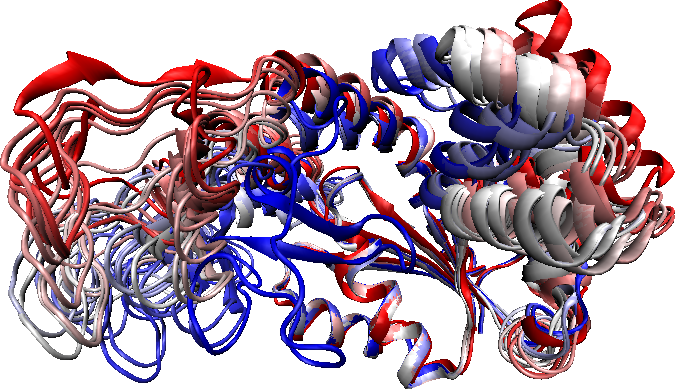Protein Structure, Kinematics, and Motion Planning
RSS 2009 Workshop
Monday, June 29th, 2009
Gregory S. ChirikjianProfessor of Mechanical Engineering
Johns Hopkins University
Robot & Protein Kinematics Lab
Title
Mathematical models of folded and unfolded protein ensembles
Abstract
This talk (and a related poster) describes Lie-group-theoretic techniques that can be applied in the analysis and modeling of protein conformations. Three topics are covered: (1) Conformational transitions between two known end states; (2) proper normalization of helix-helix crossing angle data in the PDB; (3) models of the conformational entropy of the ensemble of unfolded polypeptide conformations. Using the concept of convolution on the group of rigid-body motions, the probability density of position and orientation of the distal end of a polypeptide chain is obtained by convolving the distributions for shorter segments that make up the chain. This methodology can also be used in the analysis of loop entropy in folded proteins as well as the ensemble of unfolded conformations.Bio
Gregory S. Chirikjian received undergraduate degrees from Johns Hopkins University in 1988, and the Ph.D. degree from the California Institute of Technology, Pasadena, in 1992. Since 1992, he has been on the faculty of the Department of Mechanical Engineering, Johns Hopkins University, where he is now professor. From 2004-2007 he served as department chair. His research interests include robotics, applications of group theory in a variety of engineering disciplines and the mechanics of biological macromolecules. He is a 1993 National Science Foundation Young Investigator, a 1994 Presidential Faculty Fellow, and a 1996 recipient of the ASME Pi Tau Sigma Gold Medal. In 2008 he became a fellow of the ASME and a senior member of the IEEE.Relevant Papers
- https://custer.lcsr.jhu.edu/Publications#Protein_Kinematics
- https://custer.lcsr.jhu.edu/Publications#DNA_Mechanics_and_Conformation
- https://custer.lcsr.jhu.edu/Publications#Polymer_Science
